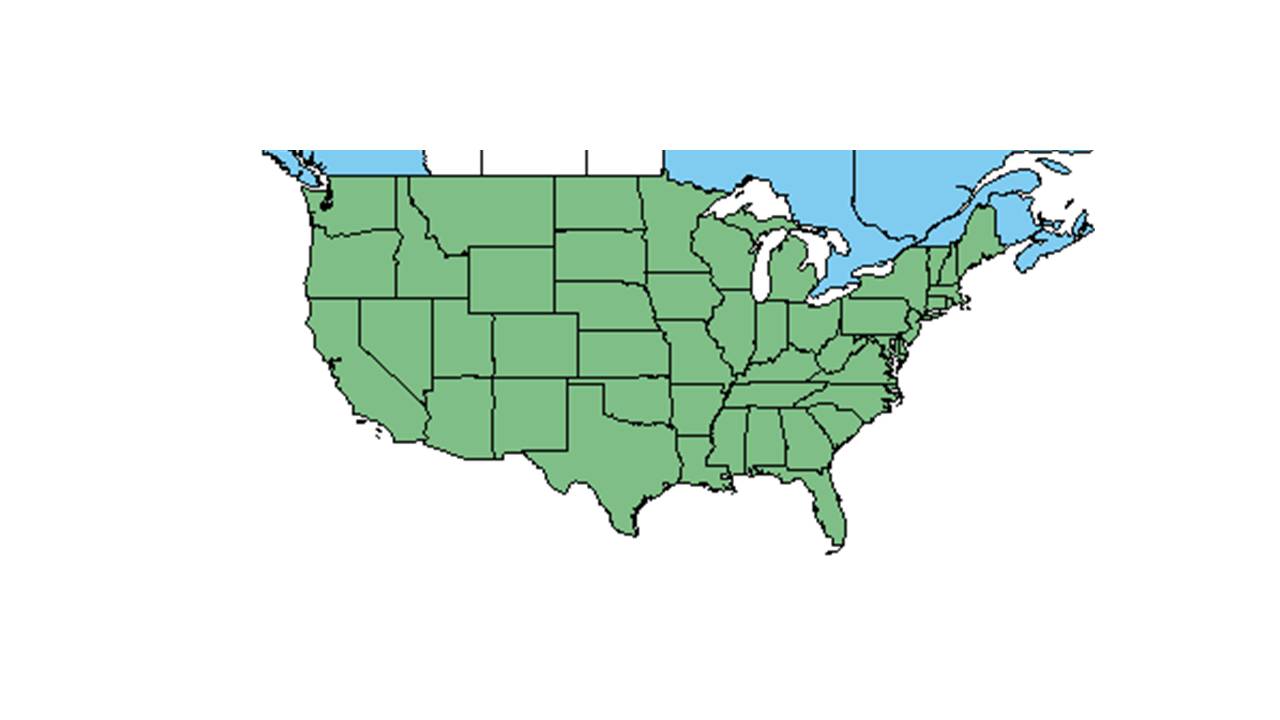Difference between revisions of "Euphorbia maculata"
KatieMccoy (talk | contribs) (Created page with "{{italic title}} <!-- Get the taxonomy information from the NRCS Plants database --> {{taxobox | name = Euphorbia maculata | image = Insert.jpg | image_caption = | regnum = P...") |
KatieMccoy (talk | contribs) |
||
| Line 15: | Line 15: | ||
| binomial_authority = (L.) Small | | binomial_authority = (L.) Small | ||
| range_map = CHAM_MACU_dist.jpg | | range_map = CHAM_MACU_dist.jpg | ||
| − | | range_map_caption = Natural range of ''Euphorbia maculata'' from USDA NRCS [http://www.plants.usda.gov Plants Database]. | + | | range_map_caption = Natural range of ''Euphorbia maculata'' from USDA NRCS [http://www.plants.usda.gov/core/profile?symbol=CHMA15 Plants Database]. |
}} | }} | ||
Common name: spotted sandmat | Common name: spotted sandmat | ||
Revision as of 17:31, 15 October 2015
| Euphorbia maculata | |
|---|---|
Error creating thumbnail: Unable to save thumbnail to destination
| |
| Scientific classification | |
| Kingdom: | Plantae |
| Division: | Magnoliophyta - Flowering plants |
| Class: | Magnoliopsida – Dicotyledons |
| Order: | Euphorbiales |
| Family: | Euphorbiaceae |
| Genus: | Euphorbia |
| Species: | E. maculata |
| Binomial name | |
| Euphorbia maculata (L.) Small | |

| |
| Natural range of Euphorbia maculata from USDA NRCS Plants Database. | |
Common name: spotted sandmat
Synonym: Chamaesyce maculata L.
Contents
Taxonomic notes
Description
Euphorbia maculata is a weedy annual herbaceous plant. It tends to grow low to the ground and somewhat repent (FSU Herbarium).
Distribution
Ecology
Habitat
E. maculata prefers moist to wet sandy soils like alluvial sands, moist loamy or clayey sand, and coarse calcareous gravelly soils (FSU Herbarium). It is found in a variety of natural and disturbed community types, including pine flatwoods, sand dunes, river banks, open shorelines, and near brackish marshes (FSU Herbarium). Disturbed habitat includes railways, citrus furrows, cracks in pavement, roadside ditches, and recently clear-cut, site prepared and planted slash pine flatwoods (FSU Herbarium).
Phenology
It has been observed flowering and fruiting in September (FSU Herbarium).
Seed dispersal
Seed bank and germination
Fire ecology
Pollination
Use by animals
Diseases and parasites
Conservation and Management
Cultivation and restoration
Photo Gallery
References and notes
Florida State University Robert K. Godfrey Herbarium database. URL: http://herbarium.bio.fsu.edu. Last accessed: June 2014. Collectors: L. C. Anderson, D. Hall, R. K. Godfrey, R. Komarek, L. Neel, R. A. Norris, A. Schmidt, and C. R. Slaughter. States and Counties: Florida: Calhoun, Collier, Franklin, Gadsden, Leon, Liberty, Polk, Taylor, and Wakulla. Geogia: Camden, Clinch, Glynn, and Thomas.